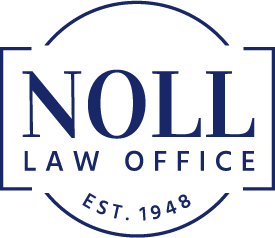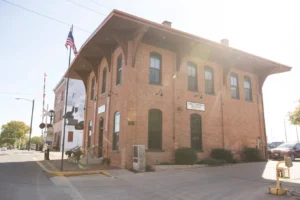Sepsis in Nursing Homes
Nursing homes play a vital role in caring for some of the most vulnerable members of our society, the elderly and disabled individuals who require 24/7 medical attention and support. However, nursing homes can also be hotbeds of infectious diseases and medical negligence, which can lead to serious health complications and even death.
Sepsis is a life-threatening complication when the body’s immune system overreacts to an infection leading to organ failure and shock. Sepsis is a leading cause of hospitalizations and deaths in the United States. Nursing home residents are at an exceptionally high risk of developing it.
The nursing home abuse attorneys at the Noll Law Office have seen firsthand the devastating effects of sepsis in nursing homes and the preventable nature of many cases. If your loved one developed sepsis in an Illinois nursing home and you believe it was the result of abuse, neglect, or malpractice, contact the nursing home abuse lawyers at the Noll Law Office in Springfield, Illinois. They offer free initial consultations where they will answer your questions and discuss your rights under the Illinois Nursing Home Care Act. They can help file a complaint with the Illinois Department of Public Health and investigate the facts surrounding your loved one’s sepsis. They work on a contingency fee which means that they only accept payment if they successfully obtain a settlement award or jury verdict in your favor.
What Is Sepsis and How Can it Affect Nursing Home Residents?
Sepsis is a medical emergency when the body’s immune response to an infection goes into overdrive, triggering widespread inflammation, tissue damage, and organ dysfunction. Sepsis can progress rapidly and cause severe symptoms, such as fever, chills, rapid heartbeat, low blood pressure, confusion, and difficulty breathing. In some cases, sepsis can lead to septic shock, in which the blood pressure drops dangerously low, and the organs fail.
Nursing home residents are at an increased risk of developing sepsis. First, they tend to have weaker immune systems due to age, underlying medical conditions, or medication use. Secondly, they are more susceptible to infections due to reduced mobility, incontinence, and exposure to sick residents or staff. Third, nursing home staff may not recognize the signs of infection or provide adequate medical care, which can lead to delayed treatment.
Common Causes of Sepsis in Nursing Homes in Illinois
Several conditions can increase the risk of sepsis in nursing homes but three of the most common causes are bedsores, urinary tract infections, and pneumonia.
Bedsores (Pressure Ulcers)
Bedsores, or pressure ulcers, are common and often preventable among nursing home residents. Bedsores occur when a person remains in the same position for too long, leading to reduced blood flow and tissue damage. If left untreated, bedsores can become infected and progress to sepsis.
Urinary Tract Infections
Urinary tract infections (UTIs) are another common infection in nursing homes, particularly among women. UTIs occur when bacteria enter the urinary tract and cause inflammation and discomfort. If left untreated, UTIs can lead to kidney damage and sepsis.
Pneumonia
Pneumonia is a respiratory infection that can be particularly dangerous for older adults with weak immune systems. Pneumonia can cause lung inflammation, making breathing hard, and can lead to sepsis if not treated.
Diagnosing Sepsis in Nursing Homes
One of the most concerning issues in nursing homes is missed infections that lead to sepsis. Healthcare professionals in nursing homes may miss early signs of an infection, which can quickly escalate to sepsis if left untreated. These missed infections can be due to a variety of reasons, including understaffing, lack of proper training, or nursing home negligence. If you are a family member, friend, or volunteer, alerting a healthcare professional of any change in the resident’s health is necessary. If you are a nurse or certified nursing assistant, inform the healthcare professional overseeing the resident’s care about your concerns and ask if the infection could lead to sepsis.
To diagnose sepsis, healthcare providers may use laboratory tests, such as blood cultures, complete blood count, or lactate levels, to detect the presence of bacteria or abnormal cells in the bloodstream. They may also use clinical criteria, such as the Sepsis-3 definition, to assess the severity of the infection and guide treatment decisions. Sepsis screening tools, such as the quick Sepsis-related Organ Failure Assessment (qSOFA), can also help identify high-risk residents.
Early Detection and Treatment of Sepsis
Early detection and intervention are critical in improving sepsis outcomes. This can include measures such as:
- Administering antibiotics promptly
- Identifying and treating the source of the infection
- Providing fluids and oxygen
- Monitoring vital signs
While there are guidelines for timing antibiotics, fluid resuscitation, and vasopressors, none of these recommendations are tailored specifically for the elderly population.
Antibiotics and Other Medications
Antibiotics are commonly used to treat sepsis. In addition, other medications may be used to support the body’s immune system and address specific symptoms. These may include:
- Corticosteroids to reduce inflammation
- Vasopressors to increase blood pressure
- Insulin to regulate blood sugar levels
- Pain medication
Supportive Care
Supportive care is essential in helping patients recover from sepsis. This may involve:
- Providing oxygen therapy
- Administering intravenous fluids
- Providing nutritional support
- Monitoring and managing pain
Surgical Intervention
In some cases, surgical intervention may be necessary to remove the source of the infection or repair any damage. This may include:
- Removing infected tissue
- Draining abscesses
- Repairing damaged organs
Overall, the key to successful sepsis treatment in geriatric patients is early detection and intervention, as well as a comprehensive approach that addresses the underlying infection and supports the body’s immune response.
Statistics and Prevalence of Sepsis
According to an investigation by the Chicago Tribune and Kaiser Health News, around 6,000 nursing home residents in Illinois develop sepsis yearly. 1 in 5 do not survive. Some key findings from this investigation include the following:
- Nursing home residents were seven times more likely to have a severe sepsis diagnosis than non-nursing home residents.
- In one year in Illinois, 1696 people died of sepsis.
- Sepsis and septic shock have high mortality rates of around 50%-60% in elderly patients.
- Older adults who survive severe sepsis have been found to experience substantial and persistent new cognitive impairment and functional disability, according to a study.
- Elderly patients are at a higher risk of being readmitted to the hospital within 30 days after being hospitalized for Sepsis.
- Older adults over 65 were five times more likely to have infections classified as severe sepsis than younger adults.
Given these alarming statistics, nursing homes must take steps to prevent sepsis and provide high-quality care for their residents.
Preventing Sepsis in Nursing Homes
Preventing sepsis in nursing homes requires a multifaceted approach involving staff, residents, families, and healthcare providers. Some of the most effective strategies for preventing sepsis include:
- Good hygiene: Nursing home staff must practice proper hand hygiene, wear personal protective equipment, and isolate sick residents to prevent the spreading of infectious diseases.
- Infection control: Nursing home staff must follow evidence-based infection control practices, such as regular cleaning and disinfecting surfaces, equipment, and resident rooms.
- Monitoring for signs of infection: Nursing home staff must be vigilant for signs of infection or sepsis, such as fever, chills, or confusion, and report any concerns to the healthcare provider.
- Vaccination: Nursing home residents and staff should receive recommended vaccines, such as the pneumococcal vaccine, the flu vaccine, and the COVID-19 vaccine, to prevent infectious diseases.
- Nutrition and hydration: Nursing home residents must receive adequate nutrition and hydration to maintain their immune systems and prevent infections.
- Bedsore prevention: Nursing home staff must use pressure-relieving mattresses or cushions, regularly turn and reposition residents, and keep the skin clean and dry to prevent pressure ulcers and infections.
- Advocacy: Family members and caregivers can advocate for better care, report concerns to the nursing home administration or regulatory agencies and seek legal help if necessary.
Sepsis is a life-threatening condition that can develop from various infections. Nursing home residents are at an increased risk of developing sepsis due to age, underlying medical conditions, and exposure to infectious diseases. Preventing sepsis in nursing homes requires a multifaceted approach involving staff, residents, families, and healthcare providers. Recognizing the signs of sepsis and responding promptly to prevent complications is essential. If you suspect your loved one has suffered from sepsis or other forms of nursing home abuse or neglect, it is crucial to seek help from a qualified attorney like those at the Noll Law Office.
If your loved one contracted sepsis while under the care of a nursing home, it is possible that the nursing home and its staff could be held liable if they failed to take appropriate measures to ensure resident safety. The Noll Law Office concentrates on abuse and neglect cases in nursing homes in Illinois. Call them today for a free initial consultation at (217) 414-8889 to learn more about how they can help.
Noll Law Office Car Accident Lawyers – Springfield
930 E Monroe St, Springfield, IL 62701
Office Hours:
Monday – Open 24 hours
Tuesday – Open 24 hours
Wednesday- Open 24 hours
Thursday – Open 24 hours
Friday – Open 24 hours
Saturday – Open 24 hours
Sunday – Open 24 hours

